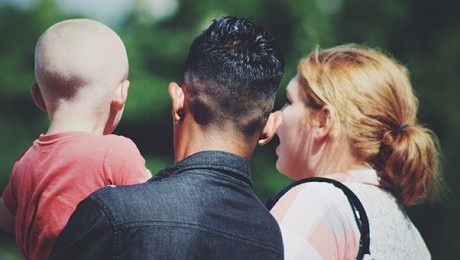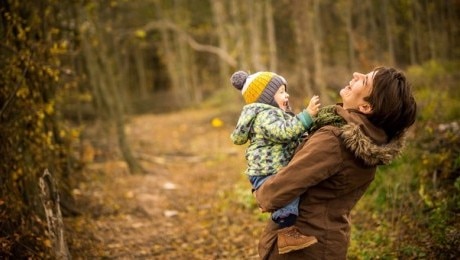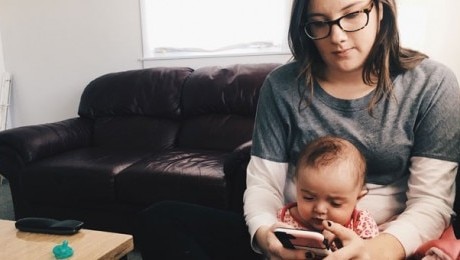
all
Learning
7 Tips for Having a Sensory Friendly Halloween
By Dyan Robson, AND NEXT COMES L
Photo © dingo/Twenty20
Oct 16, 2019
Halloween can be a lot of fun for most kids. But for others, the holiday just might be, well, a little too much.
Besides all the sugar that will be consumed, there's the costumes and the spooky Halloween imagery everywhere. Everyone's dressed up and unrecognizable. There are kids running around the neighborhood ringing bells and shouting "trick-or-treat" at the top of their lungs.
It's overwhelming when you think about it, right?
Here are more ways to support your child from Dyan Robson: How To Help Kids Who Struggle With Daily Transitions
So for some kids, Halloween is really hard to get through without some kind of sensory meltdown. However, there are lots of things you can do to help prepare your autistic or sensory kid for Halloween.
So don't worry — here are seven tips for having a sensory friendly Halloween:
1. Pick a sensory friendly costume
Costumes, whether store-bought or homemade, can be uncomfortable and overwhelming for lots of autistic and sensory kids. Here are some ideas to keep in mind to make your child's costume more sensory friendly:
- Use comfortable clothes for a base layer beneath the costume
- Remove all tags (they're often scratchy and annoying)
- Avoid masks and face paint
- Make a costume from regular clothes or incorporate your child's regular clothes
- Wash or clean the costume before wearing to remove funky odors and soften fabric
- Go up a size so your child can wear a compression vest or weighted vest underneath
2. Use social stories to prepare your child
If you're not familiar with social stories, they are visual tools that outline the specific steps involved in particular social situations and events. They use pictures and text to help describe what is expected of your child during the event. They're very helpful for many kids. You can write or use social stories about costume expectations, carving a pumpkin, how to go trick-or-treating and so on to help prepare your child for the Halloween festivities.
You might want to use social stories that address personal safety concerns too, including crossing the street safely, using a flashlight (in case it's dark while trick-or-treating), staying with friends or family while out, etc.
3. Practice trick-or-treating ahead of time
Practicing can help your child learn the expected behaviors of trick-or-treating like knocking or ringing the bell, saying "trick-or-treat" and remembering to say thanks. You can practice by:
- Roleplaying with dolls or toys
- Visiting a friend's house and doing a mock trick-or-treating event
- Having your child wear their costume and knocking on the door then answering and handing out candy for a roleplaying scenario in preparation of Halloween night
4. Practice wearing the costume before Halloween
When you are buying a costume, you should encourage your child to try it on at the store to make sure that they will be comfortable wearing it. Then let them wear their costume around the house to get more familiar with it, even if it is only for short periods of time. Doing so also allows you to determine any issues with the costume that can be fixed prior to Halloween. For example, you might discover that the costume is too long and it requires some hemming.
For those upcoming Halloween parties: 5 Non-Candy Halloween Snacks For Classmates
5. Keep expectations and commitments low
Halloween is an extremely overwhelming holiday for sensory kids, so keep the day low key.
Your child's school might be having a Halloween class party or a dance where they encourage kids to wear their costumes. If that's too much for your child, then simply encourage your child to wear a fun Halloween-themed shirt instead of their costume.
Also, try not to overbook your child with Halloween festivities either. You don't need to attend every Halloween party you're invited to or see offered in your community.
You also don't have to trick-or-treat around the entire neighborhood with your child. Instead, you can opt to visit a couple of neighboring houses or just go trick-or-treating at your family's or friends' houses. There's no quota to fill when it comes to trick-or-treating. Keep the expectations manageable for your child. If visiting 10 houses is too much, then aim for one or two instead.
6. Have a backup plan
Kids change their mind about everything. They'll likely change their mind about their costume the day before Halloween. So be flexible and have some kind of backup plan in mind. That might mean having a backup costume or opting to stay in and watch a Halloween show instead of going trick-or-treating.
7. Offer your child lots of breaks
If your child gets easily overwhelmed, then be sure to offer lots of breaks. That might include going trick-or-treating for five houses and then coming home to relax for ten minutes before heading out again. Or it might mean bringing along some of your child's favorite calm down tools like noise-reducing ear muffs, a chewable necklace or some fidgets.
The key here is to follow your child's lead so that they can have a happy and safe Halloween.
Most Popular
-
 Ages:
Ages:
allStories
Childhood Is Too Short So Just Let The Teens Trick-Or-Treat
-
 Ages:
Ages:
allFamily Health
Why Being A Halloween Candy Micromanager Can Create Long-Term Problems For Kids
-
 Ages:
Ages:
allStories
My Daughter Wore a 1960s-Inspired ‘Indian’ Costume — And Here’s How I Took Care of That
-
 Ages:
Ages:
allStories
I’m Not Your Typical Mom — Here Are 5 Assumptions You Have All Wrong
-
 Ages:
Ages:
allStories
Here’s Why We’re Ditching Trick-or-Treating This Year



















































Add New Comment
To encourage thoughtful and respectful conversations, first and last names will appear with each submission to CBC/Radio-Canada's online communities (except in children and youth-oriented communities). Pseudonyms will no longer be permitted.
By submitting a comment, you accept that CBC has the right to reproduce and publish that comment in whole or in part, in any manner CBC chooses. Please note that CBC does not endorse the opinions expressed in comments. Comments on this story are moderated according to our Submission Guidelines. Comments are welcome while open. We reserve the right to close comments at any time.
Submission Policy
Note: The CBC does not necessarily endorse any of the views posted. By submitting your comments, you acknowledge that CBC has the right to reproduce, broadcast and publicize those comments or any part thereof in any manner whatsoever. Please note that comments are moderated and published according to our submission guidelines.